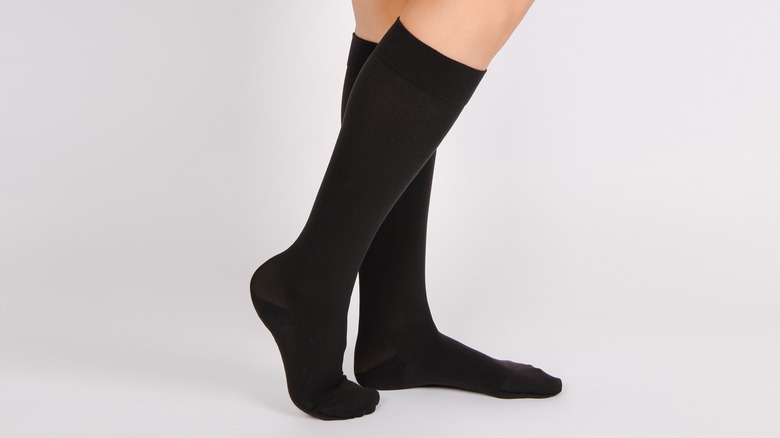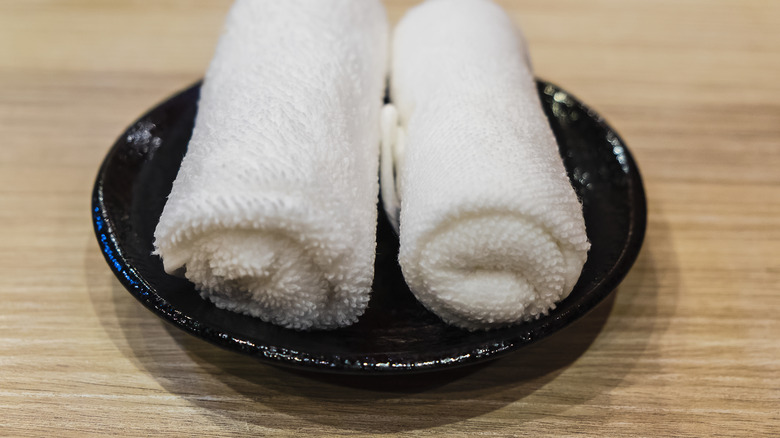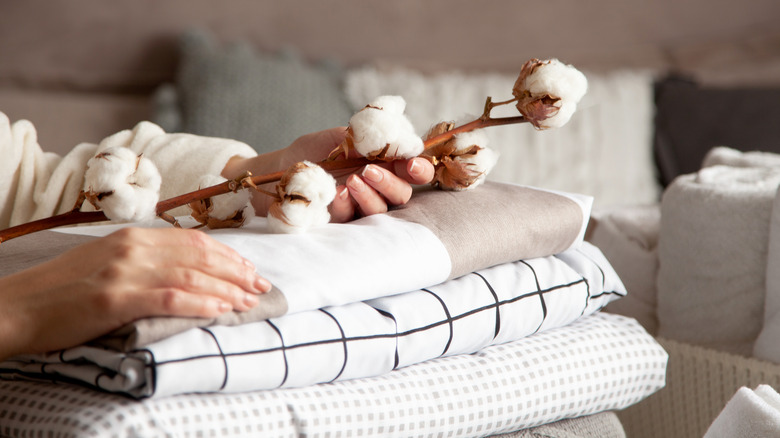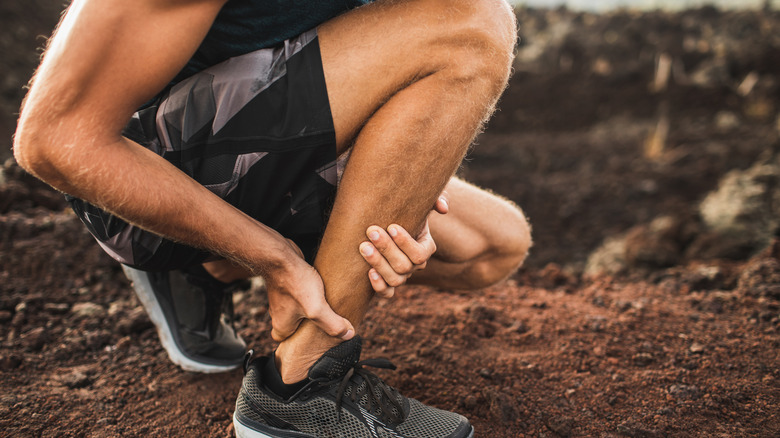How To Make A Homemade Heating Pad
Applying heat to a sensitive or painful area of your body can help relieve soreness or pain. When a heating pad is applied, blood rushes to that area of the body, reducing stiffness in the joints, preventing muscle spasms, and loosening the area (according to Hopkins Medicine). Some of the most common sore areas of the body are the neck and the back, and this can be caused by a variety of things. Overexertion during exercise, stress, tension, an injury, or an underlying medical condition can all contribute to aches and pains, explains Single Care.
However, if you don't have a heating pad in your home, don't worry. You may not need to run to your local drug store and spend money. It's possible to make your own heating pad with materials lying around your house for a quick and simple way to alleviate soreness. A homemade heating pad may even relieve just as much muscle pain as a store-bought version.
An old sock can function as a heating pad
Everyone has one or two socks laying around that don't have a partner. You may even have a whole basket full of them in your laundry room. Well, those socks can finally be put to good use. Preferably, you would use a larger sock, like a tube sock, for this (via Healthline). This is also best used for your neck, shoulders, or other small areas that need relief.
First, fill the sock with rice (yes, you read this correctly). Then, after leaving enough room at the top to seal the sock shut, sew the end of the sock closed or use a rubber band to close it off. Microwave the sock on high for 3 minutes or less, then apply to the afflicted area. Use caution when taking it out of the microwave, as it will be hot. If the sock goes cold, reheat for 1 minute. Congratulations, you now have a DIY heating pad!
Heat a damp towel in the oven
You can also make a heating pad using a trick you may have experienced at a barber shop. To get the delightful effect of a hot towel, salons, barbers, and spas often soak a towel in water. This towel is then heated before they apply it to your face or skin (via Men's Journal). You can do essentially the same thing to relieve aches and pain, according to Medical News Today. This is best used for larger areas, like your lower back, so try to find a fairly large towel.
First, soak your towel in water and then wring out as much excess water as possible. Your towel should now be damp, but not dripping. Fold the towel and place it in an oven heated to 300 degrees F (149 degrees C) for 5 to 10 minutes. How long you leave it in the oven depends on the thickness of the towel. Start with 5 minutes, then increase as needed.
Remove the towel from the oven and wrap it in a thin towel or cloth before applying it to the afflicted area.
Sew pieces of an old pillowcase or shirt together
With some basic sewing skills, you can make a heating pad that looks a bit nicer (per Healthline). Sewing is not as difficult as you may think. All you need is a needle and some thread, and you can fix holes in shirts, patch pants, or create a homemade heating pad.
Take two rectangular pieces cut from either old pillowcases or shirts. The size of the rectangles will depend on how big you want your heating pad to be. Then sew the pieces together, leaving a hole big enough to add the filling. Rice, barley, or oats all hold heat well, according to Sew4Home. You can even add dried herbs to add a relaxing scent to your heating pad. Finally, sew the hole closed. Microwave the heating pad for 3 minutes or less and you now have a reusable heating pad that not only provides relief from pain, but a sense of accomplishment from your new skill.
Hand towels and a plastic bag
Finally, if you want to try the simplest way to create a homemade heating pad, look no further than two hand towels and a Ziploc bag. Seriously — that's it, according to Healthline.
After acquiring the materials, soak both hand towels then squeeze and wring them out until water stops dripping out, leaving the towels damp. Next, place one towel inside the bag, not closing it all the way to allow it to vent. Microwave the bag on high for 2 minutes before carefully removing it. Now fully close the bag and wrap the other towel around it, applying the compress to the sore area. The heat will last roughly 20 minutes before needing to be reheated.
If you need prolonged exposure to heat, you may want to consider purchasing an electric heating pad. However, if you only need a few minutes to feel relief, these homemade compresses may do the trick. But before you start your at-home treatment, you should know when it's appropriate to use a heating pad for pain.
Avoid heating pads for inflammation or swelling
It's important to know when not to use heating pads to relieve pain. While it may seem like it won't cause harm, improperly using a heating pad at the wrong time can exacerbate a condition. Heating pads should only be used in specific circumstances.
If you have suffered from an injury and there is inflammation or swelling, do not use a heating pad for 48 hours, according to Hopkins Medicine. Instead, use a cold pack to bring the swelling down and numb pain in the area. Icing an area restricts the blood vessels and decreases circulation to the area, explains Boystown Hospital. You could make the swelling worse if you try applying a heating pad immediately after an injury happens.
As a general rule of thumb, use heating pads for muscle pain or stiffness after swelling or inflammation has reduced, according to Healthline.






